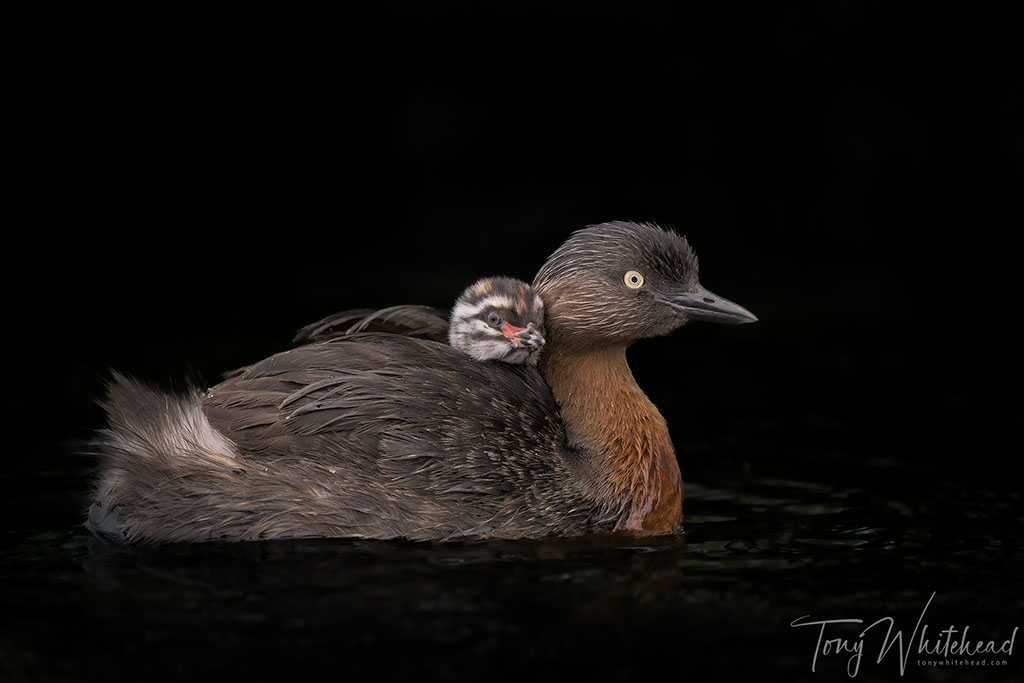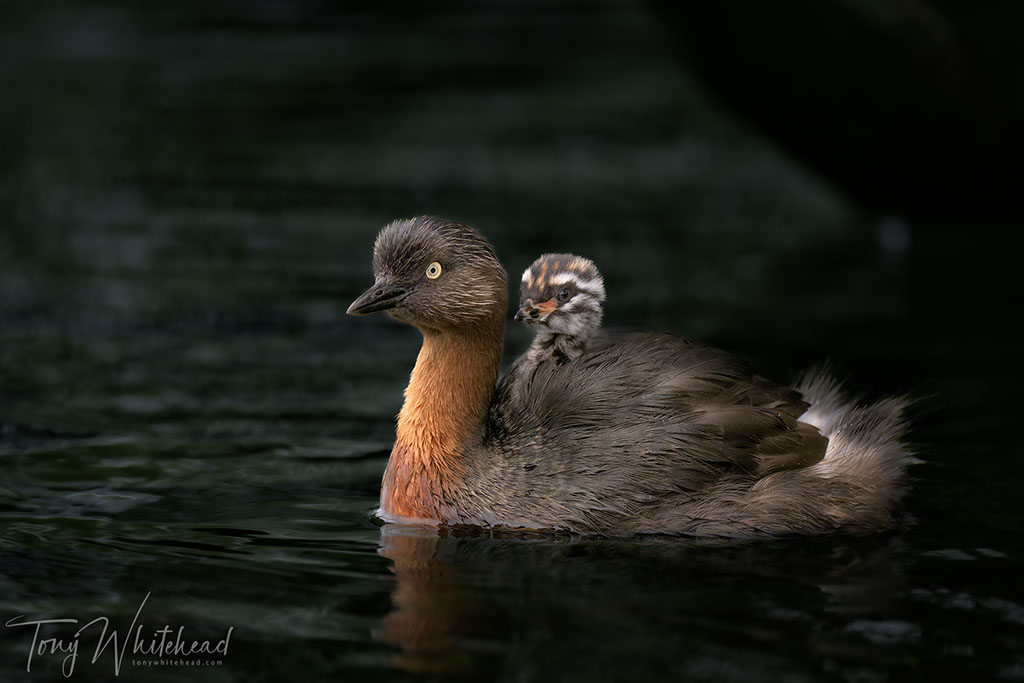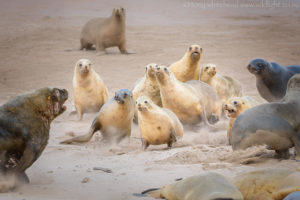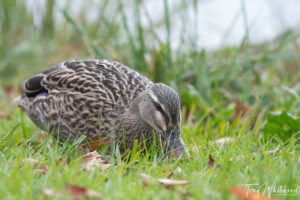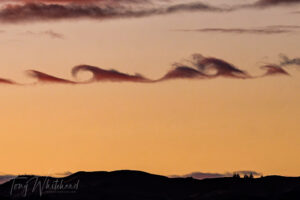Controlling the background can make a huge difference in an image. Being consciously aware of this is an important area to develop as you progress your photography. We start by looking for subjects, then subjects in good light, next comes subjects in good light with good backgrounds that don’t distract from the subject. Small changes in position can significantly alter a background and I have written on this in the past. Getting low is often a very useful way of improving backgrounds.
Todays image shows the difference in images taken close together in time and location but with a subtle difference in background. To set the scene, I was photographing this Weweia/NZ Dabchick with it’s chick in low diffused light. The were swimming between me and a low rocky islet with trees growing from it. When between me and the islet the dark rock edge and trees kept reflections from the water and gave a lovely dark background for a low key image as shown at the head of the post.
As they swam to the side, reflections came into play and changed the background. You can just see a curved tree trunk on the right showing the edge of the previous dark background. In this case with a moving subject it was not really an option to move to regain the background. It was more a matter of choosing when to trigger the shutter to achieve the desired result.
These images also highlight the importance of manual exposure. The light falling on the birds was unchanged so the exposure needed to stay the same. If using an automatic mode, the reflection on the water would have brightened the scene and potentially reduced the exposure resulting in underexposure of the birds.
Photos with Nikon Z9 and Nikkor Z 800mm f6.3 VR S
